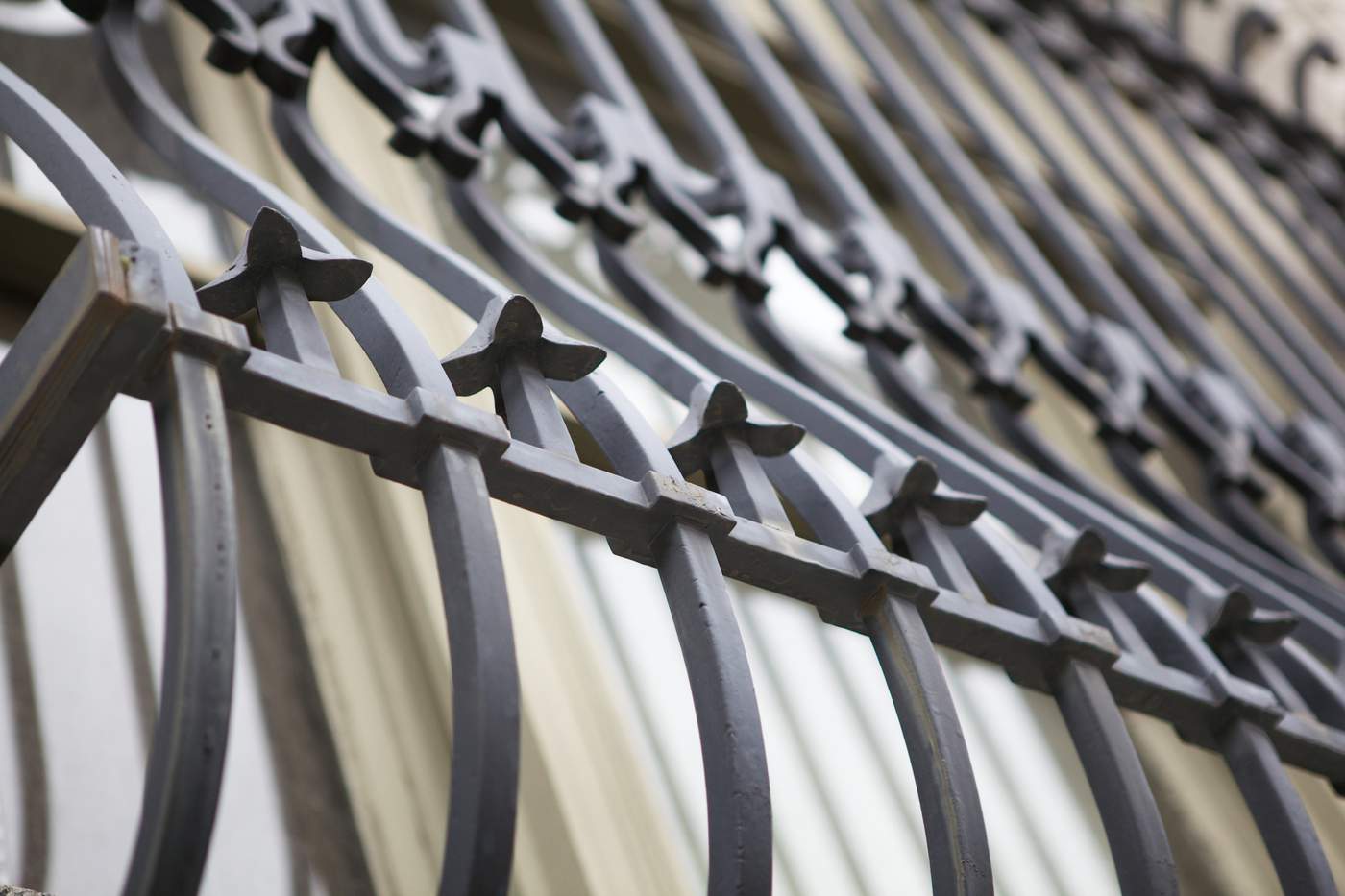
Burglar bars come in all shapes and sizes and range from highly decorative models that improve architectural looks to aesthetically minimal ones that are purely functional. Commercial and industrial buildings may have ones that are fixed in place, but residential models must be designed to be opened from the inside to permit emergency evacuation. Click Here for The Bestselling Home Security Products.

Codes for types of bars and how they may be installed vary greatly from location to location. Community housing authorities may also have rules banning their use or curtailing which type may be installed. Homeowners should not rely on choosing to install what a neighbor has because of grandfather rules that may permit that type to exist only because of when it was installed.
Types of Window Security Bars
The standard type of security bars on windows are the fixed metal grate type. It is a design of vertical and horizontal crosspieces welded together. The space between the bars can be as small as a fine mesh where even a finger could not get through to spacing just small enough to prevent a person from climbing through. The compromise is often a mix of the security level desired and the aesthetic appeal. An industrial building such as a prison is going to be concerned with security first and looks second, but a residential home often weighs the look over actual security provided.
Window bars also come in models that do-it-yourself homeowners can install. They are available at major building supply home center websites. These models often are a compromise in their sturdiness, security level and aesthetic appeal as well as incorporating design factors, making them universally installable on windows. This level of compromise in design may render them ineffective and easy to circumvent by a savvy and determined intruder.
Some decorative models are made of flimsy, easy-to-bend bars that look good but provide little security. Their presence may act as a deterrent to less determined intruders. In areas where home invasions are a marked risk, professional installation of custom window security bars is highly recommended.
Movable Window Security Bars
Commercial buildings such as retail jewelry stores often have window bars that are moved into place manually or automatically to secure against illegal entry when the store is closed. Some window security models completely cover the opening while others may be a combination of bars and chains that do not interfere with visibility into or out of the building.
Most residential installations only use this type of security window covering for glass doors, and large windows. The drawback is that there is no passive protection because they need to be moved into place every night and every time the house is unoccupied.
Metal Used in Window Security Bars
Steel is the best overall choice for window bars. Some models may be available in aluminum and provide very minimal protection. Steel can also be compromised in strength when it is thin, spot welded or tubular in construction. Some steel window security bars utilize pipe square tubes in their design. The bars may look thick but are hollow inside. Welds where the horizontal and vertical pieces meet may not be fully welded all around. Worse yet, fasteners of some type may be used to secure the framework together.
Choosing Windows to Receive Security Bars
Many residential homes only have security bars on basement and first floor windows because second story entry of intruders is not as common. However, roof design and access points such as overhanging trees, fire escapes and nearby vehicles that can be climbed on may make it easy to get to second story windows. Windows hidden from neighbor and street view are also easier targets for first or second stories.
Since many basement level windows are hidden behind vegetation or other objects, their windows should be secured with very sturdy window bars. This prevents a criminal from compromising the security of the window bars a little at a time over a period of days or weeks. The metal used in this type of installation is usually designed to withstand cutting attempts.
Some jurisdictions have strict fire and building codes that need to be considered with a permit being required before installation begins. It is important to check with the local building authority that grants building permits as well as the local fire department before installing window security bars.
If they are not installed according to the existing laws, homeowners face fines and forced removal of the bars, resulting in unnecessary expenses and aggravation. Security bars on windows can protect from burglary and home invasions but only to the degree of their sturdiness, quality of the installation, sturdiness of the rest of the building and doors along with the determination of the intruders.
Additional Resources:
https://brinkshome.com/
https://www.adt.com/home-security
https://en.wikipedia.org/wiki/Safety_and_security_window_film
https://en.wikipedia.org/wiki/Security_alarm
https://en.wikipedia.org/wiki/Home_security